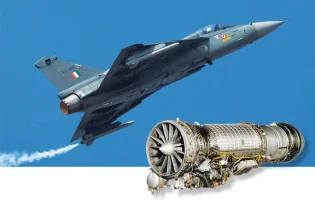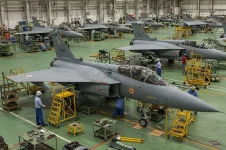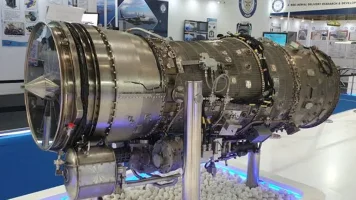- Views: 2K
- Replies: 9
In a powerful address to the nation on Independence Day, August 15, 2025, Prime Minister Narendra Modi issued a clear directive for India's scientific community and defence industry: to develop and build Indian jet engines for the nation's fighter aircraft.
This call for technological self-reliance, part of the overarching Aatmanirbhar Bharat (Self-Reliant India) vision, has sharply focused attention on a critical ongoing project—the Hindustan Turbo Fan Engine (HTFE-25) program.
Developed by state-owned Hindustan Aeronautics Limited (HAL), the HTFE-25 is now seen as the most promising pathway to fulfilling the Prime Minister's goal.
However, experts argue that for the program to succeed and meet the nation's strategic timelines, it must be elevated from a company-led initiative to a national mission, backed by significant government funding and streamlined support.
The HTFE-25: India’s Homegrown Powerplant
At the heart of this ambition is the HTFE-25 engine, a project undertaken by HAL's Aero Engine Research and Development Centre (AERDC) in Bengaluru since 2013.It is a sophisticated twin-spool, low-bypass turbofan engine engineered to produce 25 kilonewtons (kN) of thrust, equivalent to approximately 5,600 pounds.
Featuring advanced components such as a multi-stage compressor and high-efficiency turbine blades, the engine is designed for versatility.
It can power single-engine aircraft up to five tonnes, such as advanced trainers and unmanned aerial vehicles, or twin-engine aircraft weighing up to nine tonnes.
This adaptability makes it a cornerstone technology for India's future aerospace and defence capabilities.
A Journey of Progress and Persistent Hurdles
HAL has independently financed the HTFE-25 program to maintain autonomy and reduce reliance on government defence bodies.The project has achieved several key milestones, including its first successful test run in 2015, cold-weather start-up trials, and critical high-altitude tests in Leh.
Progress was further boosted by the inauguration of a modern design and testing facility in December 2023.
Despite these achievements, the program has been hampered by significant challenges. Delays in land clearances, procurement bottlenecks for critical components, and existing technology gaps have collectively pushed the projected timeline for full validation and testing from 2025 to at least 2027-28.
Consequently, final certification of the engine is now not expected until the end of the decade. This extended timeline underscores the limitations of HAL's current self-funding model, which, while substantial, is insufficient for the capital-intensive and high-risk nature of aero-engine development—a field dominated by only a handful of nations globally.
The Argument for a National Mission
Granting the HTFE-25 program "national mission" status could provide the momentum needed to overcome these obstacles.A mission-mode approach, similar to the successful India Semiconductor Mission, would ensure dedicated central government funding, accelerate decision-making processes, and foster vital collaborations between government labs, academic institutions, and private sector giants like Tata or Bharat Forge.
Such a framework would transform the project into a national priority, essential for developing what is often considered the pinnacle of defence technology.
Strategic Importance for India's Defence
The successful development of the HTFE-25 would have far-reaching implications for India's military preparedness.Its potential applications include:
- Upgraded Trainer Aircraft: The engine is a prime candidate for retrofitting the HAL Hawk Mk-132 Advanced Jet Trainer (AJT), the workhorse used by the Indian Air Force. An Indian-made engine would enhance performance, simplify the supply chain, and reduce long-term operational costs.
- Unmanned Combat Systems: The engine is ideally suited to power India’s next-generation unmanned platforms. These include the Ghatak stealth Unmanned Combat Aerial Vehicle (UCAV) and the CATS Warrior loyal wingman drone, which are critical for maintaining a technological edge in the region. It could also be integrated into long-endurance surveillance drones, enhancing India's intelligence and reconnaissance capabilities along its borders.
- Future Growth: An afterburner-equipped variant of the HTFE-25 is planned, which could increase its thrust to 40 kN. This would open the possibility of powering future light combat aircraft or advanced strike drones.
The Prime Minister's call has set the stage; now, a decisive policy push is needed to turn this vision into reality.





